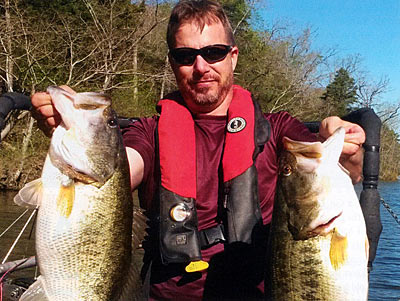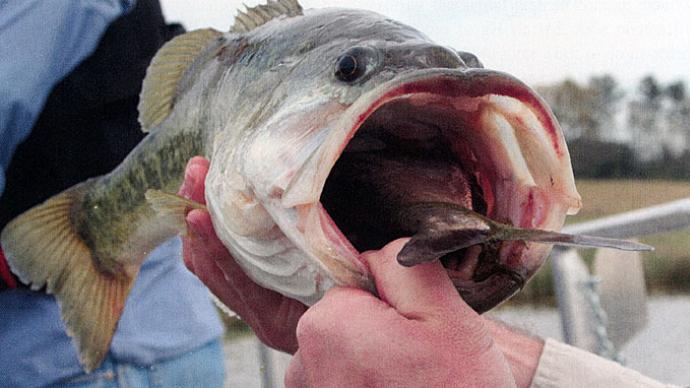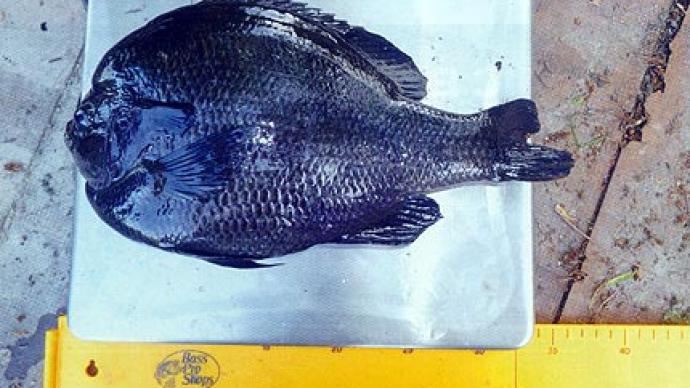
Since the earliest days of farm pond management, pond gurus have made pond stocking recommendations based on the idea that if you stock the pond or lake correctly in the beginning, it will provide quality fishing opportunities for decades. I myself have been guilty of telling landowners there's generally no need to ever restock bass or bream unless you have had a fish kill or intentionally drained or poisoned the pond to start over. These fish species are just too good at reproducing themselves. In fact, they are so prolific that under-harvest of fish is one of the biggest problems in most ponds. So why on earth would you want to stock more?
But, recently I have been haunted by nightmares of college past. I close my eyes and I am back in Genetics 101 discussing the topic of inbreeding depression. We touched a little on this topic last year in the March-April edition of Pond Boss. Inbreeding depression happens when closely related animals reproduce with one another, and it reduces genetic variation through a process called random genetic drift. Genetic variation is important to a fish's growth and maximum size, and inbreeding depression reduces genetic variation. Thus, a small genetic population can lose genetic material through successive generations.
Moderate lack of genetic diversity at stocking may not show any ill effects on the pond fishery. However, if severe enough, the effects may compound with time, and the genetic deficiency can be expressed as increasing numbers of fish with deformities, abnormalities in reproduction, decreased growth rate, and ultimately decreased survival. The effects of inbreeding on productive traits are well known in several fish species used for aquaculture. For example, after only two generations of full sibling mating in rainbow trout, the percentage of deformed fry doubled, fry survival decreased by 30%, and average size decreased by 33.5%. Similarly, two successive generations of full sibling mating in channel catfish resulted in a 19% decrease in size.
Surprisingly, the effects of reduced genetics via stocking have not been studied much in natural systems. It is clear that inbreeding depression would be counterproductive to most fisheries management goals in naturalized systems, especially the desire to maximize growth rate and ultimate fish size. Reduced genetic diversity may be an especially significant problem in small water bodies, such as your private pond paradise. The aquaculture studies described above found major issues after only two fish generations, but pondmeisters generally expect their ponds to be awesome for the next 10-20 fish generations!
Imagine a typical pond stocking scenario. A 20-acre pond may be stocked with 2,000 bass purchased from a single hatchery. In a typical hatchery, bass are produced from a small group of adult bass. Many of these broodfish likely were collected from a single lake or purchased from another hatchery, so they may be closely related before they even entered the hatchery. Even if we assume good broodstock selection procedures and unrelated fish are spawned together, there is still significant risk of a genetic bottleneck. For example, hatcheries usually put a few male and a few female bass together into each spawning pond to get fingerlings. Each female bass will produce at least 2,000 eggs per pound of body weight, so a 4-pound female may lay 8,000 eggs or more per spawn. Because small largemouth bass are highly cannibalistic, hatcheries like to maintain and sell fish that are very similar in size. This is easier to do when they all come from the same spawning event (i.e., the same parents).
So when a pondmeister-to-be originally stocks her 20-acre pond with the recommended 2,000 fingerling largemouth bass from a single hatchery, it is likely that these fish came from only a few closely-related parents, or maybe even the same two parents! In genetics, this is called a small founder population. It is bad enough that the pond has an initial population of fish that could be brothers and sisters, but now these fish are expected to interbreed for the next 20,30,40 years! I think I just heard the banjo riff from Deliverance.
This exercise in reasoning has caused me to rethink how we initially stocked private waters, and how we maintain them over subsequent decades. First, the initial introduction of fish to a new or renovated lake should be composed of fish from several different hatcheries. This starts the lake off with more genetic variation, which should reduce the potential for inbreeding. However, don't stock a mixture of genetic strains, like a mix of Florida bass and northern
Largemouth Bass or F1 hybrid bass, as this can lead to another problem called outbreeding depression. Pick a strain and stick with it.
Second, maybe it is not such a bad idea to add a few fish to refresh genetics to your lake from time to time. It doesn't take very many fish to counteract inbreeding, as long as they come from a slightly different source with slightly different genetics. Again, I wouldn't mix genetic strains because of concerns about outbreeding depression, and locally adapted fish are generally the best choice. Unfortunately, there's been no research on this, so it is difficult to say how many fish to stock for genetic refreshment, or how often to refresh, but basic genetic theory suggests that only a few fish every decade or so would be a good preventative measure against inbreeding depression.
Make sure the supplemental fish come from a reputable source and are the same genetic strain as the fish already in your pond. Stocking random fish from a neighbor's pond or your local reservoir is highly risky, as these fish might be too different genetically (outbreeding depression), or you may introduce diseases to your fish population. I have collected spotted bass in a pond that the owner had misidentified on a fishing trip and then transported to his pond. I have also seen outbreaks of largemouth bass virus wipe out larger bass in a lake where anglers brought in diseased fish. It is always safest to just use a fish hatchery.
If you stock fingerlings, you will need to stock quite a few to ensure some live to adulthood. Stocking a pond that has established fish populations is more difficult than stocking a new pond, because there are large, hungry fish waiting to eat your new, naive fish. Another option is to stock larger fish. Larger fish are more expensive and more difficult to find, but you can stock a lot fewer fish and don't have to worry about predation as much. Usually, 8-12 inch bass or 4 inch sunfish can avoid most pond predators. Just a few fish per acre should be enough to offset any genetic losses.
Normally I don't make pond management recommendations without significant research to back them up, but the recommendations of this article are soundly based in genetic theory. And if you take care to select similar genetic strains and avoid diseases, adding a few fish every five to ten years shouldn't have any negative effect on your fish. If your genetics are fine and supplemental stocking does not provide any genetic benefit, it will at most give you peace of mind. If your genetics are lacking, it may save you some trouble down the road.
Reprinted with permission from Pond Boss Magazine



